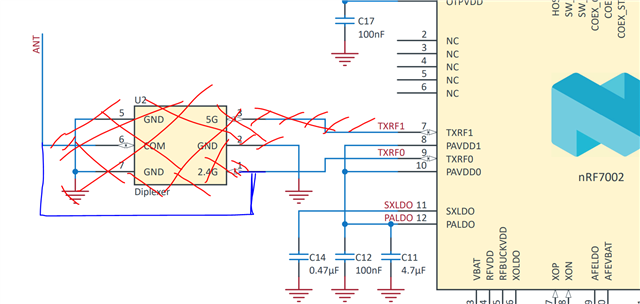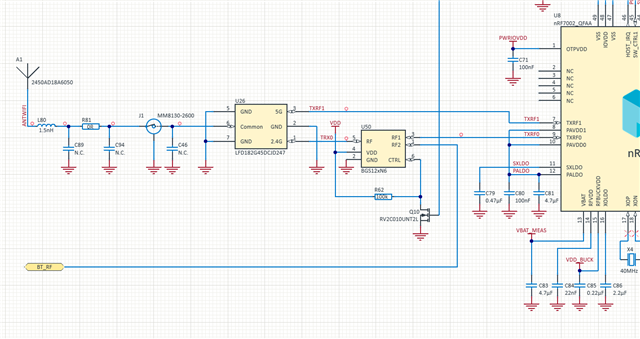Hello everyone!
I'm developing a custom board in which the two above mentioned chip will live.
As the nRF7002 Prod. Spec file states, I can use two different antennas, one dedicated to the 5340, one to the 7002.
I already have a working design for a PCB antenna for the nRF5340, so that's not a problem. I'm more curious about the nRF7002, since my guess is that, if I want to use a patch antenna, I could only work with 2.4 OR 5 Ghz. This problem would be solved by the diplexer and the chip antenna as it is used in the nRF7002DK. Is the whole reasoning right?
Also, If i decide to go for a PCB antenna for the 7002, what would be the RF trace that I need to adapt to 50 oHm impedance?

Do I need matching circuitry? If not, it's correct to assume that my antenna start directly from the PIN?

